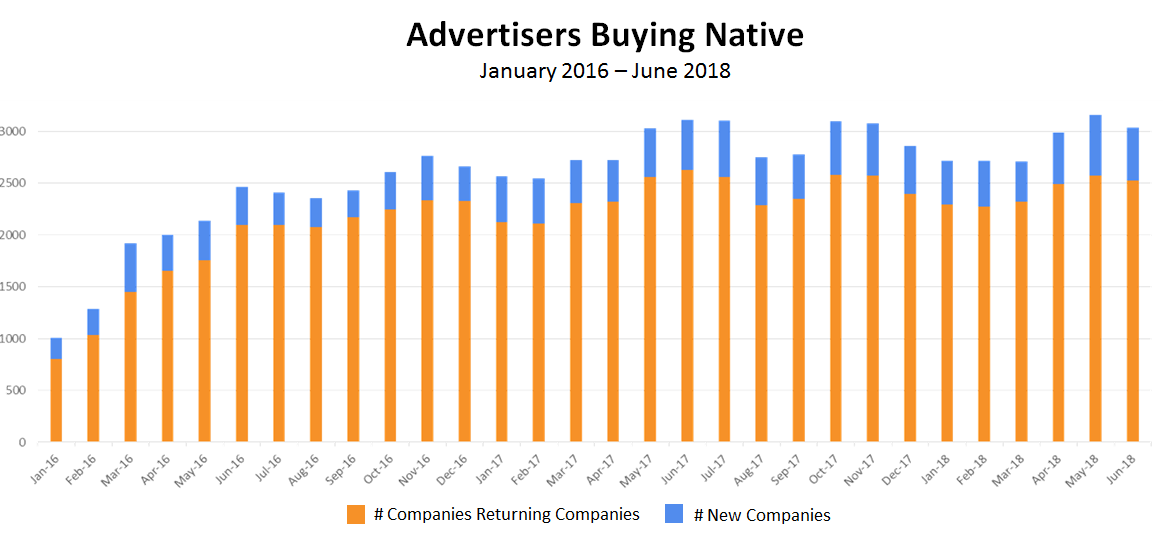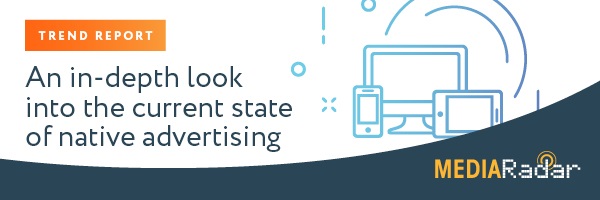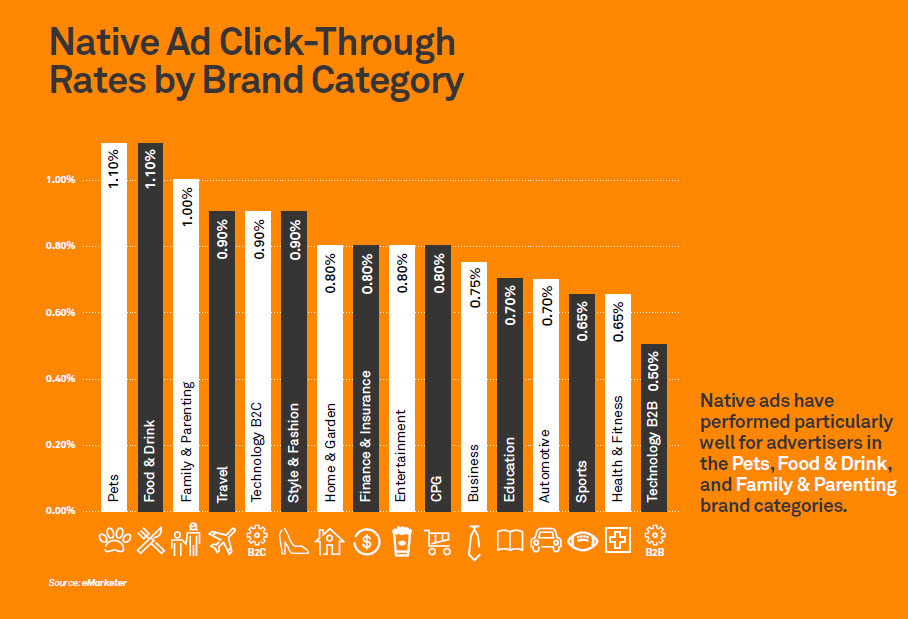There are certain challenges associated with native advertising. It appears that advertisers have recognized these drawbacks. Recently, the total number of native advertisers has stagnated and native advertising’s overall expansion has slowed. Only about 11% of online advertisers use native formats now and brands that buy native ads only run them across 10% of the total number of sites that they advertise on. See the graph below.

Here are some of the challenges with native advertising.
Disadvantages of Native Advertising
1. Measure
Measuring the performance and sustainability (with higher renewal rates) of native campaigns is one of the most difficult challenges to overcome for advertisers. Without unified standards in this area, it’s especially hard to gauge metrics, such as return on investment (ROI), impact, and effectiveness.
2. Time and Labor
A great story and design requires both time and talent to produce, neither being areas that advertisers and content creators should cut corners on. The actual process of crafting a native ad or campaign is a costly, multistep process, involving a lot of collaboration and rounds of review, done over a long period of time.
3. Deception
Audiences don’t want to be disrupted by ads, but they also don’t want to be duped into believing that an advertisement is anything other than what it is. Consumers should only be exposed to online advertisements that are fair, clear, and engaging. Unfortunately, native advertising has the potential to be too discrete. To avoid this possibility, the FTC generated a Native Advertising guide. The manual instructs advertisers on how and when to use certain terminology and obvious labels in its ads to not deceive its viewers.
Even though there are a number of challenges with native advertising, many would argue that the format’s benefits still outweigh the negatives. We know that Google would. The search engine still loves native advertising for these reasons:
- Native advertising is less disruptive than any other ad format
Because native ads sit within content, they’re integrated better. They are less noticeable and, therefore, less disruptive. They don’t change user experience much, if at all.
- Native advertising benefits content viewers, publishers, and advertisers
Content viewers favor native advertising because the format gives them a more enjoyable flow of content.
The format is also more useful for advertisers since native advertising gets higher rates of engagement from users, which in turn will drive higher CPMs and revenue for publishers, as the demand for native inventory increases.
- Native advertising is useful on any platform
Native ads tend to render higher engagement from content viewers, thus making them useful for publishers and advertisers on any mobile phone or desktop, and almost any social media platform or app.
- Native advertising promotes sponsorships
A sponsorship allows a brand to act as a co-presenter and advertise themselves through a publisher’s content. A sponsorship is just another way in which a native ad can reach its target users without disrupting the flow of their content experience.
Here are some additional benefits of native advertising.
Advantages of Native Advertising
1. Custom content (branded native and branded content) is more trustworthy than traditional advertising
According to a Time Inc. study, 2 in 3 GenZ, Millennials, and GenX consumers trust branded content more than traditional advertising. As a group of more visually-inclined individuals, GenZ is open to engaging with custom content because, compared with traditional ads, it’s more entertaining, thought-provoking, and leaves a lasting impression.
2. Interesting content is engaged with more
In a consumer’s eyes, ”interesting” is synonymous with “relevant.” According to a Reuters survey, 75% of consumers say that, if content peaks their interest, then they will engage with it. It doesn’t matter if the content is branded or not. But, there are additional steps in building a branded content campaign that can make it even more successful: understanding the audience, knowing how, when, where, and why a piece of content should be placed, creating an emotional connection with the consumer and aligning the content with their personality, personalizing the content, and employing more engaging formats like videos and infographics.
3. Native display ads receive a higher click-through-rate (CTR) than typical display ads
In fact, the CTR is 8.8 times higher with native display ads, according to an AppNexus whitepaper. Native ads have performed particularly well for advertisers in the pets, food and drink, and family and parenting brand categories, as shown by the graph below.
4. Native advertising drives Millennials to make purchases
A Collective Bias survey discovered that 1/3 of Millennials say that they’ve purchased something as a result of a sponsored post. Surprisingly, consumers don’t immediately dismiss these posts. Almost 37% agreed that useful and high-quality posts negate the content’s branded nature.
Conclusion
The overall growth of native advertising has slowed in recent years, This fact, however, doesn’t signal the format’s end. Native advertising may have certain drawbacks, but it also has many more benefits. Advertisers aren’t ready to give it up just yet.





